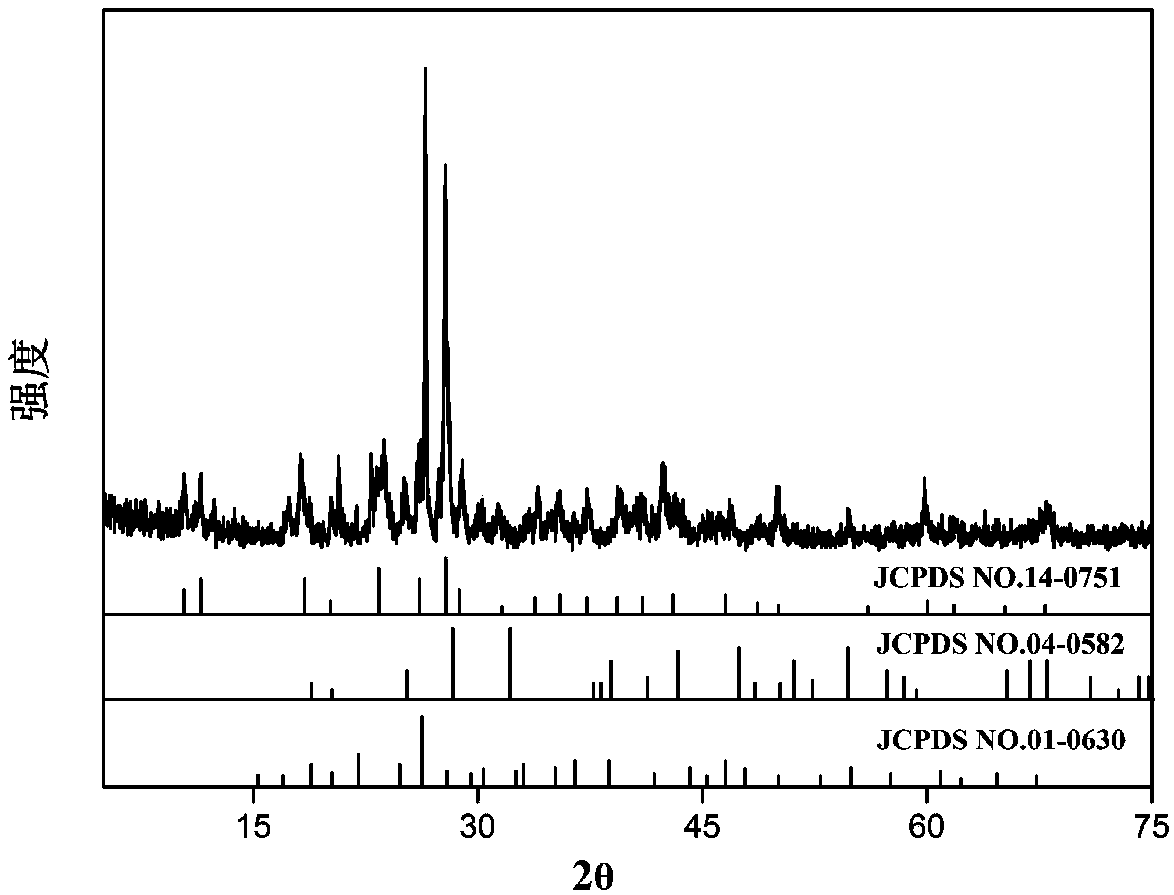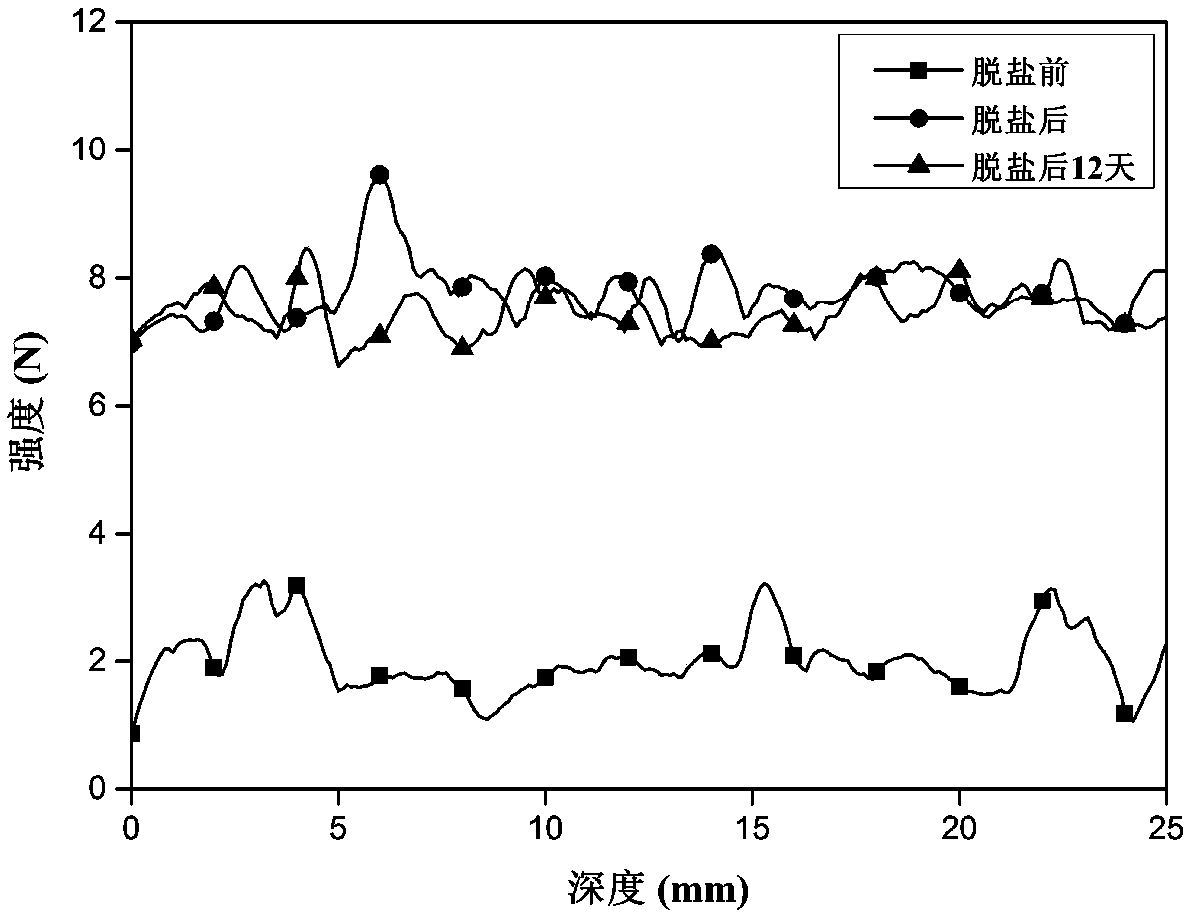Method for removing sulphate from outdoor crisp brick cultural relic
A sulfate and crisp powder technology, which is applied in the field of sulfate removal from outdoor crisp powder brick cultural relics, can solve the problems of exacerbating the "fragility" of cultural relics, low mechanical strength, and destroying the original appearance, so as to reduce the retention time and migration speed Speed up and improve the effect of mechanical strength
- Summary
- Abstract
- Description
- Claims
- Application Information
AI Technical Summary
Problems solved by technology
Method used
Image
Examples
Embodiment 1
[0023] 1. After scraping off the dirt and moss on the surface of the brick cultural relics salt damage crisp powder, spray A solution evenly on the part, every 100cm 2 Spray 60mL of A solution, which is an ethanol solution containing 12g / L phosphoric acid and 24g / L oxalic acid dihydrate, and let it dry naturally for 3 days after spraying.
[0024] 2. Mix deionized water and B solution evenly at a volume ratio of 1:7, and then spray evenly on the part treated with A solution, every 100cm 2 Spray 80mL of solution B, which is a methanol solution of barium hydroxide octahydrate with a concentration of 12g / L, and let it dry naturally for 3 days after spraying.
[0025] 3. Repeat the above steps 1 and 2 in sequence, and repeat the operation 3 times.
Embodiment 2
[0027] 1. After scraping off the dirt and moss on the surface of the brick cultural relics salt damage crisp powder, spray A solution evenly on the part, every 100cm 2 Spray 70mL of solution A, which is an ethanol solution containing 8g / L phosphoric acid and 16g / L oxalic acid dihydrate, and let it dry naturally for 3 days after spraying.
[0028] 2. After mixing the deionized water and solution B at a volume ratio of 1:6, spray evenly on the part treated with solution A, every 10cm 2 Spray 90mL of solution B, which is a methanol solution of barium hydroxide octahydrate with a concentration of 10g / L, and let it dry naturally for 3 days after spraying.
[0029] 3. Repeat the above steps 1 and 2 in turn, and repeat the operation 5 times.
Embodiment 3
[0031] 1. After scraping off the dirt and moss on the surface of the brick cultural relics salt damage crisp powder, spray A solution evenly on the part, every 100cm 2 Spray 50mL of solution A, which is an ethanol solution containing 15g / L phosphoric acid and 25g / L oxalic acid dihydrate, and let it dry naturally for 3 days after spraying.
[0032] 2. Mix deionized water and solution B at a volume ratio of 1:9, and then spray evenly on the part treated with solution A, every 10cm 2 Spray 70mL of B solution, the B solution is a methanol solution of barium hydroxide octahydrate with a concentration of 8g / L, and let it dry naturally for 3 days after spraying.
[0033] 3. Repeat the above steps 1 and 2 in turn, and repeat the operation 4 times.
PUM
| Property | Measurement | Unit |
|---|---|---|
| concentration | aaaaa | aaaaa |
| concentration | aaaaa | aaaaa |
| concentration | aaaaa | aaaaa |
Abstract
Description
Claims
Application Information
 Login to View More
Login to View More - R&D
- Intellectual Property
- Life Sciences
- Materials
- Tech Scout
- Unparalleled Data Quality
- Higher Quality Content
- 60% Fewer Hallucinations
Browse by: Latest US Patents, China's latest patents, Technical Efficacy Thesaurus, Application Domain, Technology Topic, Popular Technical Reports.
© 2025 PatSnap. All rights reserved.Legal|Privacy policy|Modern Slavery Act Transparency Statement|Sitemap|About US| Contact US: help@patsnap.com



